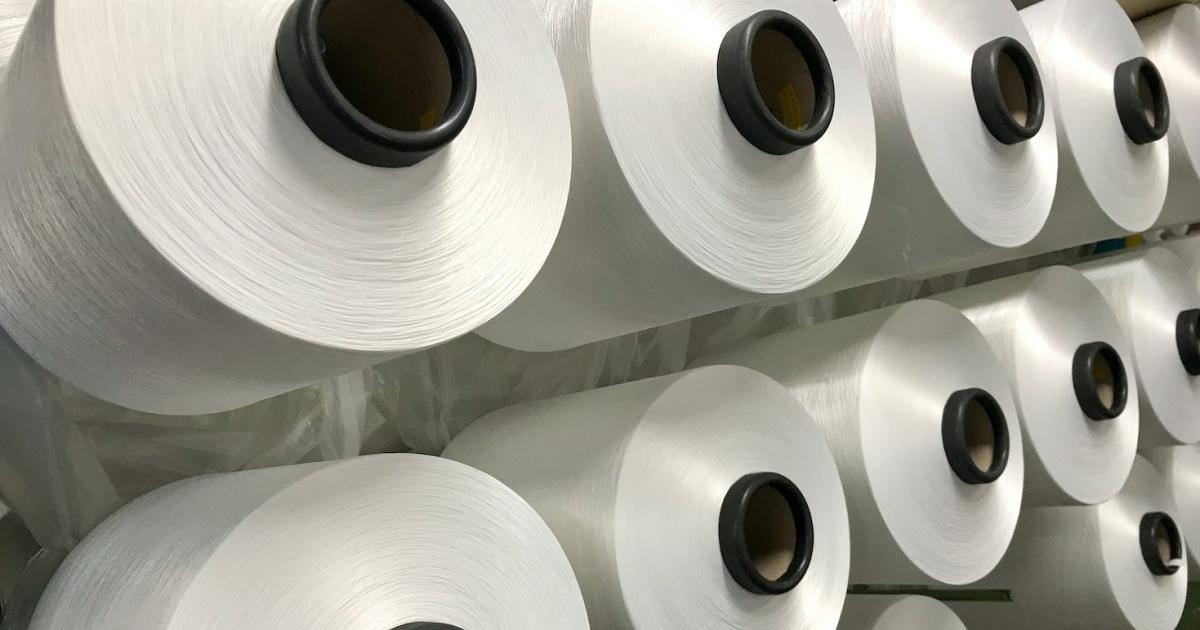
H&M’s new deal to buy $600 million of “circular” polyester over seven years from Syre, a Swedish startup it co-founded, underlines one of fashion’s dirty secrets: Making new polyester from recycled bottles sounds environmentally friendly but, in reality, polyester is a huge source of pollution. And recycling bottles to make more polyester might be worse than the alternative — keeping the bottles in the beverage industry where they can be recycled.
Now some fashion companies are moving toward circular, textile-to-textile solutions that cut recycled bottles from the process altogether.
For decades, fashion companies turned old plastic bottles into new clothes in the hope of reducing the demand for virgin polyester, a petrochemical product, which comes with an obvious carbon footprint. Polyester is made from natural gas and crude oil, which has disproportionately stoked the climate crisis.
We want to continue to drive and inspire more industry players to join us in closing the loop and accelerating the shift towards a more sustainable future.
Scores of brands — Aeropostale, Guess, Lands’ End, Patagonia and Speedo among them — sell garments made from Repreve, a material that starts its life as a polyethylene terephthalate (PET) soda bottle.
Repreve maker Unifi of Greensboro, North Carolina, says it has recycled nearly 40 billion bottles into textile-based products. Ninety-nine percent of recycled polyester comes from PET bottles, according to the nonprofit Textile Exchange.
When recycling is a bad idea
There’s a problem with that, however. It requires energy to turn a plastic bottle into polyester. And every bottle that becomes a shirt is a bottle that isn’t being reused as a bottle.
“The biggest problem with bottles as a source for recycled polyester is that it takes bottles out of what could be a circular loop in plastic packaging and instead sends the plastic to be made into apparel which ends up in landfill,” Planet Tracker Senior Investment Analyst Richard Wielechowski said.
Regulators have taken notice: The European Union’s Green Claims directive, for instance, frowns upon bottle-to-textile recycling, because it competes with closed-loop recycling of bottles for beverages.
The circular solution for polyester
Increasingly, fashion retailers are shunning plastic bottles for their recycled textiles. Instead, they’re moving toward what they believe is a truly circular option: polyester from pre-worn clothing and offcuts.
H&M Group, Zara owner Inditex and Puma are among those turning to textile-to-textile recycled polyester.
Before H&M’s $600 million with Syre, the company had been in stealth mode for two years, exploring chemical-recycling technologies developed in North Carolina’s Research Triangle Park. Other Syre backers include Vargas Holding, an impact investor that has raised $20 billion “to decarbonize 1 percent of global emissions.” Investment firm TPG Rise Climate is providing seed funding.
“With this solution to rapidly scale textile-to-textile recycling, we want to continue to drive and inspire more industry players to join us in closing the loop and accelerating the shift towards a more sustainable future,” said H&M Group CEO Daniel Ervér in a March 6 press release. If successful, H&M says this would “cover a significant share” of its need for recycled polyester, which currently comes from plastic bottles.
H&M has come under fire in the US for greenwashing over its recycled-bottle polyester. However, a federal court last summer dismissed a proposed class-action lawsuit against the brand’s “sustainable” marketing.
What Syre seeks to do
H&M’s sustainability goals include sourcing half of its materials from recycled sources. The company says it has nearly reached its goal of 30 percent recycled materials by 2025. It’s hoping to reach 50 percent by 2030.
Dennis Nobelius, CEO of Syre, said he foresees the need for “the great textile shift” to a circular economy that eliminates waste. “That’s why you need partners and suppliers that can deliver at a massive scale to make these industries circular together,” Nobelius told GreenBiz. “Fashion from H&M will be able to be circulated back to H&M in terms of new yarn and fibers.”
That’s why you need partners and suppliers that can deliver at a massive scale to make these industries circular together.
Syre’s first plant in North Carolina is a “blueprint” operation where it is fine-tuning its processes. It’s supposed to become operational this summer. The company then hopes to open the first of 12 commercial plants internationally by the second half of 2026. Eventually, with all plants online within 10 years, they will churn out more than 3 million tonnes annually.
“The brands, the [sorters] and collectors of today, the recycling companies today, they will all need to be part of that to reach the volume that they need,” Nobelius said.
The demand is already there
Consumers and fashion brands are buying polyester at record rates. Synthetic fabrics overtook the previous king of fibers, cotton, in the 1990s. Polyester accounts for 54 percent of global fiber production. It also makes up 15 percent of recycled fibers, more than any other type.
Governments are tilting the market, too. Europe is encouraging textile recycling via extended producer responsibility (EPR) regulations, which put the onus on brands to reduce the environmental impact of products even after they’re sold.
As a result, Unifi said it will ramp up its textile recycling over the next six years, converting the equivalent of 1.5 billion old T-shirts into new resin for polyester yarn by 2030.
This is “an opportunity to help brands and retailers accelerate meeting their sustainability targets,” Unifi CEO Eddie Ingle told GreenBiz.
More moves in polyester textile recycling
H&M is among 124 signatories of the 2025 Recycled Polyester Challenge alongside Eileen Fisher, the Gap, Levi Strauss and Nike. The nonprofit Textile Exchange, along with the United Nations, launched the effort in April 2021 to grow the market share of recycled polyester in fashion from 14 percent to 45 percent in 2025.
Other moves include:
- In February, Patagonia and Eastman partnered to chemically recycle 8,000 pounds of garments. By weight, 92 percent of Patagonia’s polyester clothes use recycled materials. Patagonia sold the first recycled-bottle polyester fleece in 1993. It wants to halt its use of virgin polyester by 2025.
- In November, Zara’s parent company Inditex signed a three-year agreement to buy $76 million of cycora, made with used polyester garments, from Ambercycle. The Los Angeles-based startup has raised $28.1 million in funding. The deal supports Inditex’s goal for one-quarter of its textile fibers to come from “next-generation materials” by 2025.
- In December, Puma announced it was moving away from bottles as a source for its Re:Fibre recycled polyester. Beginning this year, polyester recycled from scrap material and worn clothing will form the material for soccer jerseys worn in Euro and Copa América tournaments. The company wants 100 percent of its polyester to come from waste textile.
- French bio-recycling startup Carbios in October unveiled a new process that turns used clothing and scraps into a textile using enzymes. In 2022, the company formed a two-year, non-competitive partnership with Puma, On and Salomon.
- Designer label Stella McCartney in November displayed a parka made in partnership with Protein Evolution of New Haven, Connecticut. The startup has raised $20 million in seed funding for its process using AI-designed enzymes to make new PET from waste polyester.
The microfiber problem
Activists, researchers and analysts urge caution about allowing the industry to rely on polyester because it sheds microfibers into the rivers and oceans when being worn or washed. Recycled polyester merely delays the inevitable, they say. Only 1 percent of clothing is recycled. Most garments end up in landfills or incinerators, polluting the air, soil and water. As a result, more than 14 million metric tonnes of microplastics — much of it from apparel — are sitting on the ocean floor, according to the European Environment Agency.
Is recycling a fossil fuel-based input that sheds microplastics and degrades over generations the right aspiration to achieve environmental betterment?
“Is recycling a fossil fuel-based input that sheds microplastics and degrades over generations the right aspiration to achieve environmental betterment?” Ken Pucker, professor of the practice at the Fletcher School at Tufts University, wrote on LinkedIn. “It’s not clear if ‘getting there’ will ultimately reduce carbon emissions anywhere close to promises,” he emailed GreenBiz.
Nevertheless, advocates of circular polyester contend that they are keeping material out of landfills, which reduces methane emissions.
Ingle of Unifi said the industry should balance polyester recycling with work to reduce microfiber pollution, such as designing clothes to shed less and integrating fiber filters into washing operations.
Industry efforts to minimize plastic pollution from apparel include the 2030 Microfibre Consortium, a group of companies working on ways to change their manufacturing practices so that clothes shed fewer fibers. H&M, Patagonia and Puma are among the signatories.
- SEO Powered Content & PR Distribution. Get Amplified Today.
- PlatoData.Network Vertical Generative Ai. Empower Yourself. Access Here.
- PlatoAiStream. Web3 Intelligence. Knowledge Amplified. Access Here.
- PlatoESG. Carbon, CleanTech, Energy, Environment, Solar, Waste Management. Access Here.
- PlatoHealth. Biotech and Clinical Trials Intelligence. Access Here.
- Source: https://www.greenbiz.com/article/why-hm-turning-away-polyester-recycled-bottles
- :has
- :is
- :not
- :where
- $UP
- 000
- 1
- 10
- 100
- 12
- 14
- 15%
- 2021
- 2022
- 2025
- 2026
- 2030
- 30
- 40
- 45
- 5
- 50
- 54
- 6
- 8
- a
- Able
- About
- accelerate
- accelerating
- According
- Accounts
- Achieve
- advocates
- After
- against
- AIR
- All
- Allowing
- along
- alongside
- already
- also
- alternative
- altogether
- among
- an
- analyst
- Analysts
- and
- announced
- Annually
- any
- anywhere
- apparel
- April
- ARE
- AS
- aspiration
- At
- away
- back
- backers
- Bad
- Balance
- BE
- because
- become
- becomes
- been
- Beginning
- being
- believe
- Betterment
- BEVERAGE
- Beverages
- Biggest
- Billion
- blueprint
- brands
- but
- buy
- Buying
- by
- CAN
- carbon
- carbon emissions
- carbon footprint
- Carolina
- caution
- ceo
- change
- circular
- circular economy
- clear
- Climate
- climate crisis
- Close
- closing
- clothes
- Clothing
- collectors
- come
- comes
- commercial
- Companies
- company
- Connecticut
- contend
- continue
- converting
- COPA
- could
- Court
- cover
- crisis
- crude
- Crude oil
- Currently
- Cut
- Daniel
- deal
- decades
- decarbonize
- December
- delays
- deliver
- Demand
- designing
- developed
- displayed
- disproportionately
- drive
- EC
- economy
- effort
- efforts
- eliminates
- Emissions
- encouraging
- end
- ends
- energy
- Environment
- environmental
- environmentally
- environmentally friendly
- Equivalent
- Ether (ETH)
- Euro
- Europa
- Europe
- European
- Even
- eventually
- Every
- exchange
- Exploring
- extended
- fabrics
- Fashion
- fashion brands
- February
- Federal
- fewer
- fibers
- filters
- Fire
- Firm
- First
- Floor
- Footprint
- For
- form
- formed
- fossil
- friendly
- from
- funding
- future
- gap
- garments
- GAS
- generations
- Global
- goal
- Goals
- great
- Green
- Group
- Grow
- guess
- H&M
- had
- Half
- Have
- haven
- he
- help
- holding
- hope
- hopes
- hoping
- However
- HTML
- HTTPS
- huge
- if
- Impact
- in
- include
- industries
- industry
- inevitable
- input
- inspire
- instance
- instead
- Integrating
- internationally
- into
- investment
- investor
- IT
- ITS
- join
- Join us
- jpeg
- keeping
- King
- Label
- Last
- launched
- less
- Life
- los
- made
- make
- maker
- MAKES
- Making
- manufacturing
- March
- Market
- market share
- Marketing
- massive
- material
- materials
- McCartney
- meeting
- merely
- methane
- methane emissions
- metric
- might
- million
- minimize
- Mode
- more
- most
- moves
- moving
- much
- Nations
- Natural
- Natural Gas
- nearly
- Need
- New
- next
- next-generation
- NIKE
- Nonprofit
- North
- north carolina
- Notice..
- November
- obvious
- ocean
- Ocean Floor
- oceans
- of
- Oil
- Old
- on
- ONE
- online
- only
- onus
- open
- operation
- operational
- Operations
- Opportunity
- Option
- or
- Other
- out
- over
- owner
- packaging
- Park
- part
- partnered
- partners
- Partnership
- Patagonia
- percent
- pet
- planet
- plant
- plants
- plastic
- plato
- Plato Data Intelligence
- PlatoData
- players
- Pollution
- pounds
- practice
- practices
- press
- Press Release
- previous
- Problem
- process
- processes
- producer
- Product
- Production
- Products
- Professor
- promises
- proposed
- providing
- PUMA
- put
- raised
- Ramp
- rapidly
- Rates
- RE
- reach
- reached
- Reality
- record
- recycled
- recycling
- reduce
- reduces
- reducing
- regulations
- release
- rely
- requires
- research
- researchers
- Resin
- responsibility
- result
- retailers
- reused
- Richard
- right
- Rise
- rivers
- s
- Said
- say
- says
- Scale
- School
- scraps
- Second
- secrets
- seed
- Seed funding
- Seeks
- sell
- sends
- senior
- seven
- Share
- shed
- shift
- should
- Signatories
- signed
- significant
- Sitting
- SIX
- So
- Soccer
- soil
- sold
- solution
- Solutions
- some
- sounds
- Source
- Sources
- Sourcing
- starts
- startup
- Stealth
- successful
- such
- summer
- suppliers
- Supports
- supposed
- Sustainability
- sustainable
- sustainable future
- Swedish
- synthetic
- taken
- takes
- targets
- Technologies
- terms
- textiles
- than
- that
- The
- their
- Them
- then
- These
- they
- this
- this year
- those
- to
- today
- together
- told
- too
- Tournaments
- toward
- towards
- tracker
- truly
- tufts
- TURN
- Turned
- Turning
- turns
- two
- type
- Ultimately
- under
- underlines
- United
- united nations
- university
- unveiled
- upon
- us
- use
- used
- using
- vargas
- via
- Virgin
- volume
- want
- wants
- was
- washing
- Waste
- Water
- ways
- we
- weight
- What
- when
- which
- why
- will
- with
- within
- Work
- working
- worse
- would
- year
- years
- you
- Zara
- zephyrnet









